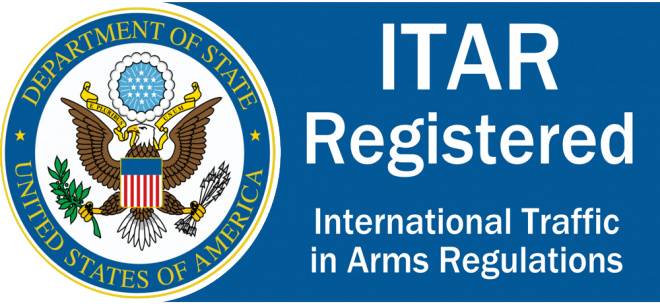New ITAR Guidance to Squeeze Small Gunsmiths
Yesterday, the firearm law experts at Prince Law Offices published a blog post titled, DDTC Issues Guidance on ITAR Registration. In the article, Adam Kraut, Esq. breaks down some new guidance released last Friday by the Directorate of Defense Trade Controls (DDTC) regarding the sorts of actions that require certain businesses to receive ITAR registration. The implications of this guidance could be far reaching and are expected to hit several small-time gunsmiths the hardest.
According to DDTC, anyone meeting the following requirements should expect to apply for ITAR registration, even if business activities are limited to domestic sales/services (bold added by Prince Law):
(a) Any person who engages in the United States in the business of manufacturing or exporting or temporarily importing defense articles, or furnishing defense services, is required to register with the Directorate of Defense Trade Controls under § 122.2. For the purpose of this subchapter, engaging in such a business requires only one occasion of manufacturing or exporting or temporarily importing a defense article or furnishing a defense service. A manufacturer who does not engage in exporting must nevertheless register.
Now, all of that may make perfect sense on the surface. It seems reasonable that anyone who manufactures “defense articles” or provides “defense services” should fall under ITAR regulations. However, there are a few problems with these terms.
Firstly, the United States Munitions List, upon which classification as a defense article is based, is remarkably inclusive. In fact, virtually any firearm .50 caliber and smaller is included on the list. Military use of a firearm or class of firearms has no bearing on its inclusion. So in reality, a firearm need not have a defensive application to be considered a defense article.
Secondly, the list of actions that constitute defense services is also surprisingly extensive. It is this section of the guidance that should be troubling for small-time gunsmiths. First, let’s take a look at what does not require registration:
a) Occasional assembly of firearm parts and kits that do not require cutting, drilling, or machining;
b) Firearm repairs involving one-for-one drop-in replacement parts that do not require any cutting, drilling, or machining for installation;
c) Repairs involving replacement parts that do not improve the accuracy, caliber, or other aspects of firearm operation;
d) Hydrographic paint or Cerakote application or bluing treatments for a firearm;
e) Attachment of accessories to a completed firearm without drilling, cutting, or machining—such as attaching a scope, sling, or light to existing mounts or hooks, or attaching a flash suppressor, sound suppressor, muzzle brake, or similar item to a pre- threaded muzzle;
f) Cosmetic additions and alterations (including engraving) that do not improve the accuracy, caliber, or other aspects of firearm operation beyond its original capabilities;
g) Machining new dovetails or drilling and tapping new holes for the installation of sights which do not improve the accuracy or operation of the firearm beyond its original capabilities; and
h) Manual loading or reloading of ammunition of .50 caliber or smaller.
Now, the services that do require ITAR registration (bold added by Prince Law):
a) Use of any special tooling or equipment upgrading in order to improve the capability of assembled or repaired firearms;
b) Modifications to a firearm that change round capacity;
c) The production of firearm parts (including, but not limited to, barrels, stocks, cylinders, breech mechanisms, triggers, silencers, or suppressors);
d) The systemized production of ammunition, including the automated loading or reloading of ammunition;
e) The machining or cutting of firearms, e.g., threading of muzzles or muzzle brake installation requiring machining, that results in an enhanced capability;
f) Rechambering firearms through machining, cutting, or drilling;
g) Chambering, cutting, or threading barrel blanks; and
h) Blueprinting firearms by machining the barrel.
Some of the listed activities are ones we have come to expect. Traditionally, manufacturers of firearms, parts, or silencers have held valid ITAR registration. The concerning difference here is that simply threading a barrel now requires gunsmiths to apply for ITAR. It should be noted that end users who thread their own barrels are free to do so without consequence. This guidance applies only to those “in the business” of offering defense services. A professional gunsmith would certainly fall under this umbrella.
Barrel threading isn’t the only sort of activity that this guidance could cover, though. Virtually any sort of commercial machining work that materially changes a firearm’s characteristics (e.g. shortening the barrel, fluting/dimpling the barrel, rebarreling certain firearms) now requires ITAR registration.
The real issue here isn’t necessarily the added paperwork of ITAR registration. Currently, Tier 1 registration (the level most domestic organizations would seek) costs $2,250 per year. This is up from the $1,750 fee that was charged before the 2008 introduction of the tiered system. For a small business, that’s a substantial amount of money. Considering that most shops charge between $50 and $100 to thread a barrel, that’s somewhere between 20 and 50 jobs that a gunsmith must complete before simply breaking even on the ITAR fee. Needless to say, some shops are really going to feel the squeeze.
An information security professional by day and gun blogger by night, Nathan started his firearms journey at 16 years old as a collector of C&R rifles. These days, you’re likely to find him shooting something a bit more modern – and usually equipped with a suppressor – but his passion for firearms with military heritage has never waned. Over the last five years, Nathan has written about a variety of firearms topics, including Second Amendment politics and gun and gear reviews. When he isn’t shooting or writing, Nathan nerds out over computers, 3D printing, and Star Wars.

